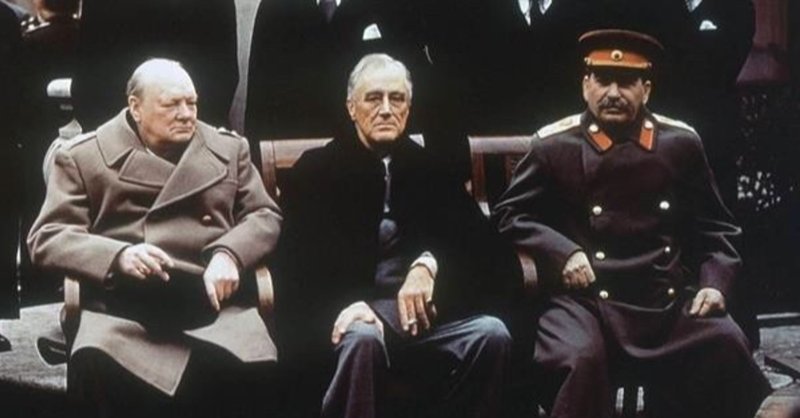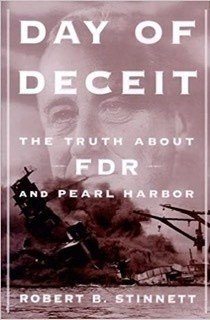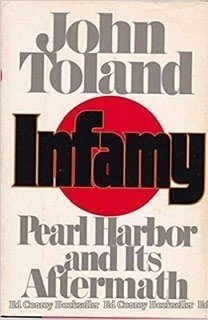
パールハーバーの欺瞞 アメリカ人が求めた真実⑶
“I said that the whole Japanese war was a madman's desire to get into war. He (MacArthur) agreed." 「日本との戦争は全部、あの『狂人(ルーズベルト)』がやりたがったと言ってるんだ。マッカーサーもそう言ってる。」 元アメリカ大統領ハーバート・フーヴァーの言葉
これは「パールハーバーの欺瞞 アメリカ人が求めた真実⑴」の続き(上)です。
元サイトは↓、米国インデペンデント誌に掲載された著者ロバート・B・スティネット氏による解説です。
Day of Deceit was well received by media book reviews and the on-line booksellers, Amazon.com and Barnes & Noble.com, earning a 70 percent public approval rating. Day of Deceit continues among the top ten bestsellers in the non-fiction Pearl Harbor book category, according to Amazon.com and Barnes & Noble.com.
『Day of Deceit』は、メディアの書評やオンライン書店のAmazon.comとBarnes & Noble.comで好評を博し、70%の支持率を獲得した。Amazon.comとBarnes & Noble.comによると、『Day of Deceit』は、ノンフィクションの真珠湾関連書籍のカテゴリーでトップ10のベストセラーの一つとなった。
About 30 percent of the reviews have discounted the book’s revelations. The leaders of the dispute include Stephen Budiansky, Edward Drea, and David Kahn, all of whom have authored books or articles on code breaking. To bolster their pre-Pearl Harbor theories, the trio violated journalistic ethics and distorted the U.S. Navy’s pre-Pearl Harbor paper trail. Their efforts cannot be ignored. The trio has close ties to the National Security Agency, the overseer of U.S. naval communications files. Kahn has appeared before NSA seminars. The NSA has not honored my FOIA requests to disclose honorariums paid the seminar participants but has released records that confirm Kahn has been a participant.
しかしレビューの約30%は、この本での暴露に悪評を付けている。率先して貶しているのは、スティーブン・ブディエンスキー氏、エドワード・ドレア氏、デビッド・カーン氏であり、いずれも暗号解読に関する本や記事を執筆したことがある。この3名は、パールハーバー以前の説を補強するために、ジャーナリズム倫理に違反して米海軍のパールハーバー以前の記録を歪曲した。その歪曲への尽力は無視できないことだ。彼らは米海軍の通信ファイルを監督するNSA(国家安全保障局)と密接な関係を持ってる。カーン氏はNSAセミナーのメンバーでもある。 国家安全保障局は、セミナー参加者に支払われた謝礼金の開示を求めた私のFOIA要求には応じなかったが、カーンが参加していたことを裏付ける記録は公開された。

Immediately after Day of Deceit appeared in bookstores in 1999, NSA began withdrawing pre-Pearl Harbor documents from the Crane Files housed in Archives II. This means the government decided to continue 60 years of Pearl Harbor censorship. As of January 2002, over two dozen NSA withdrawal notices have triggered the removal of Pearl Harbor documents from public inspection.
『Day of Deceit』が1999年に書店で発売された直後、NSAはアーカイブスIIに保管されているクレイン・ファイルから、パールハーバー以前の文書を撤去し始めた。これは、政府が60年間行ってきたパールハーバー検閲の継続を決定したことを意味する。2002年1月の時点で、NSAの撤回通知が2ダース以上となったのを機に、パールハーバーに関する文書は一般公開文書から削除されたのだった。
The number of pages in the withdrawn documents appears to be in the hundreds. Among the records withdrawn are those of Admiral Harold R. Stark, the 1941 Chief of Naval Operations, as well as crypto records authored by Commander Joseph J. Rochefort, the chief cryptographer for the Pacific Fleet at the time of Pearl Harbor. Under the Crane File transfer agreement with National Archives, NSA has the legal right to withdraw any document based on national defense concerns.
撤去された文書はざっと数百ページにも及んだ。その中には、1941年の海軍作戦本部長ハロルド・R・スターク提督の記録や、真珠湾攻撃時に太平洋艦隊の最高暗号解読者であったジョセフ・J・ロシュフォール中佐が執筆した暗号記録も含まれていた。国立公文書館と交わしたクレインファイル転送契約には、NSAは国防上の懸念に基づくいかなる文書も撤回する法的権利を有する旨の記述があり、彼らはそれを行使したのだ。
Concurrent with the NSA withdrawals, Budiansky, with the aid of Kahn and Drea, began a two-year media campaign to discredit the paper trail of the U.S. naval documents that form the backbone of Day of Deceit. One of the most egregious examples of ethical violations appeared in an article by Kahn published in the New York Review of Books on November 2, 2000. In that article, Kahn attempted to bolster his contention that Japanese admirals and warships observed radio silence while enroute to attack American Pacific bases. Kahn broke basic journalism ethics and rewrote a U.S. Naval Communication Summary prepared by Commander Rochefort at his crypto center located in the Pearl Harbor Naval Yard.
NSAの撤退と同時に、ブディエンスキーは、カーンとドレアの協力を得て、『Day of Deceit』の骨子となっている米海軍文書の証拠としての信憑性を失わせるために、2年間のメディアキャンペーンを始めた。倫理違反の最もひどい例の一つは、2000年11月2日にニューヨーク・レビュー・オブ・ブックスに掲載されたカーンの記事だ。その記事の中でカーンは、日本の提督や軍艦がアメリカの太平洋基地を攻撃に向かう途中で無線は使用しなかったとの主張を補強しようとするあまり、ジャーナリズムの基本的な倫理を破り、パールハーバー海軍基地にある暗号センターで、ロシュフォール司令官が作成した米海軍通信概要を書き直したのだ。
About 1,000 intercepted Japanese naval radio messages formed the basis of each Daily Summary written by Rochefort and his staff. The Japanese communication intelligence data contained in the messages was summarized and delivered daily to Admiral Husband E. Kimmel, Commander-in-Chief of the Pacific Fleet. Rochefort’s summary of November 25, 1941 (Hawaii time) was not to Kahn’s liking. It revealed the Commander Carriers of the Imperial Japanese Navy were not observing radio silence but were in “extensive communications” with other Japanese naval forces whose admirals directly commanded the forces involved in the Pearl Harbor attack. Because of the International Dateline, the “extensive communications” mentioned in the summary took place on November 26, 1941, Japan time, the exact day the Japanese carrier force began its journey to Hawaii.
当時傍受された約 1,000 通の日本海軍の無線メッセージは、ロシュフォールとそのスタッフが各自書いた日誌の基礎となっていた。メッセージに含まれる日本の通信情報データは要約され、太平洋艦隊司令長官ハズバンド・E・キンメル提督に毎日送られた。1941年11月25日(ハワイ時間)のロシュフォールの記録は、カーンにとって都合の悪いものだった。そこには、大日本帝国海軍の司令官空母が無線の沈黙を破り、真珠湾攻撃に関与した部隊を直接指揮していた提督率いる日本海軍部隊と「広範な通信」を行っていたことが記されていた。日付け変更線のために、要約で言及された "広範な通信 "は日本時間の1941年11月26日となっていたが、これは正に日本の航空母艦がハワイへの航海を開始した当日行われたものだったのだ。

David Kahn,Historian, journalist, writer(1930-)
In its entirety the Rochefort summary reads: “FOURTH FLEET—CinC. Fourth Fleet is still holding extensive communications with the commander Submarine Fleet, the forces at Jaluit and Commander Carriers. His other communications are with the Third, Fourth, and Fifth Base Forces.” The meaning of the summary is unequivocal: The commanders of the powerful Japanese invasion, submarine, and carrier forces did not observe radio silence as they maneuvered toward U.S. bases in Hawaii, Wake, and Guam Islands in the Central Pacific. Instead they used radio transmitters aboard their flagships and coordinated strategy and tactics with each other.
ロシュフォールの記録した要約は次の通りである。「FOURTH FLEET-第4艦隊はまだ司令官潜水艦艦隊ジャルイトの部隊と司令官空母との間で広範な通信を保持。その他第3、第4、第5基地軍とも通信している」 この要旨の意味は明白である。強力な日本の侵略軍、潜水艦軍、空母軍の司令官たちは、中央太平洋のハワイ、ウェイク、グアム諸島の米軍基地に向かって作戦を展開する時、無線の沈黙を守っていなかったのだ。それどころか彼らは旗艦に搭載された無線送信機を使用し、戦略と戦術について話し合っていたのだ。
The summary corroborates earlier findings by Pulitzer Prize-winning historian John Toland. In the late 1970s, Toland interviewed personnel and obtained U.S. naval documents from San Francisco’s Twelfth Naval District that disclosed that the “extensive communications” were intercepted by the radio direction finders of the U.S. Navy’s West Coast Communications Intelligence Network. Doubleday published Toland’s account in 1982 as Infamy: Pearl Harbor and its Aftermath.
この要約は、ピューリッツァー賞を受賞した歴史家ジョン・トーランド氏による以前の調査結果を裏付けるものである。1970年代後半、トーランド氏はサンフランシスコの第12海軍区の職員にインタビューを行い、「広範な通信」が米海軍の西海岸通信情報ネットワークの無線方向探知機によって傍受されたことを明記した、サンフランシスコ第12海軍区の米海軍文書を入手した。 Doubleday出版社は1982年、トーランド氏が執筆した文書を『Infamy(汚名):パールハーバーとその余波』と題して出版した。

Yet in his NYRoB article Kahn deleted portions of the Rochefort summary in the middle of the first sentence, profoundly diminishing its significance. Kahn’s version: “Fourth Fleet is still holding extensive communications with the Commander Submarine Fleet.” Kahn violated basic journalism rules by deleting crucial words and not using eclipses to indicate a deletion. When I cited these ethical violations to the editors of the NYRoB, Kahn offered an excuse and implied that Rochefort’s summary was too long. “I had to condense my review,” he wrote.
さらにカーンは、NYレビューの記事の中で、最初の文の途中でロシュフォールの要約記録の一部を削除し、その重要性を著しく低下させた。カーン版では「第四艦隊はまだ司令官潜水艦隊との広範な通信を保持しています」となっている。カーン氏は重要な単語を削除したがその時削除を示すための'エクリプス'を使わなかったことで、ジャーナリズムの基本的ルールを破った。私がNYレビューの編集者にこれらの倫理違反について言及した時、カーンは言い訳がましく、ロシュフォールの記録が長すぎたと仄めかすように、「私はあのレビューを端折らなければならなかった 」と書いた。
Kahn probably believes his deletion was insignificant because he denies that the Commander Carriers were involved in the Pearl Harbor attack. “The force that attacked Hawaii was not that of the Commander Carriers but the First Air Fleet,” he wrote in his reply to my Letter to the Editor of the NYRoB (February 8, 2002). Kahn revealed his ignorance of the Japanese naval organization. The First Air Fleet operated under Commander Carriers, that is, Vice Admiral Chuichi Nagumo, who was in charge of the entire Hawaii Operation.
カーンは、司令艦隊の真珠湾攻撃関与を否定しているため、その削除は重要ではないと考えていたのだろう。「ハワイを攻撃したのは司令艦隊ではなく、第一航空艦隊だ」と、私のNYレビュー編集者への手紙への返信に書いている(2002年2月8日付)。カーンは日本の海軍組織に対する無知を露呈した。第一航空艦隊は空母中佐、つまりハワイ作戦全体を指揮していた南雲忠一副提督指揮下で運航していたのである。
(続く)
